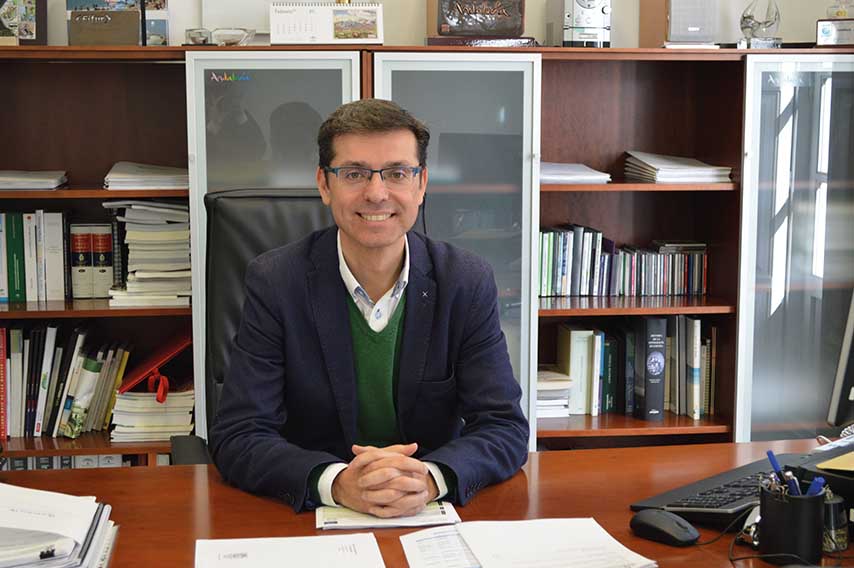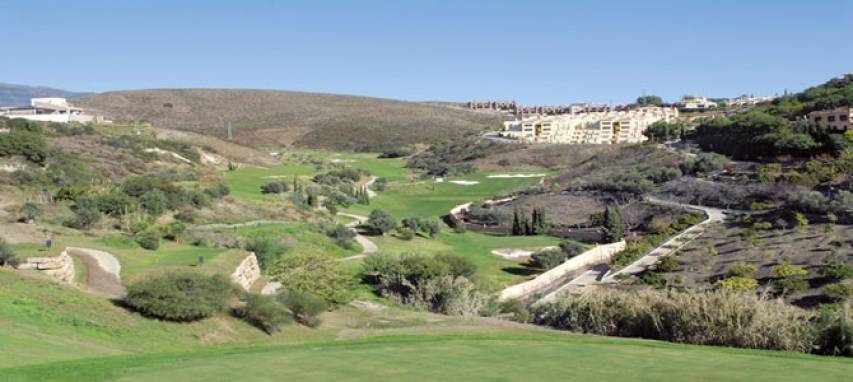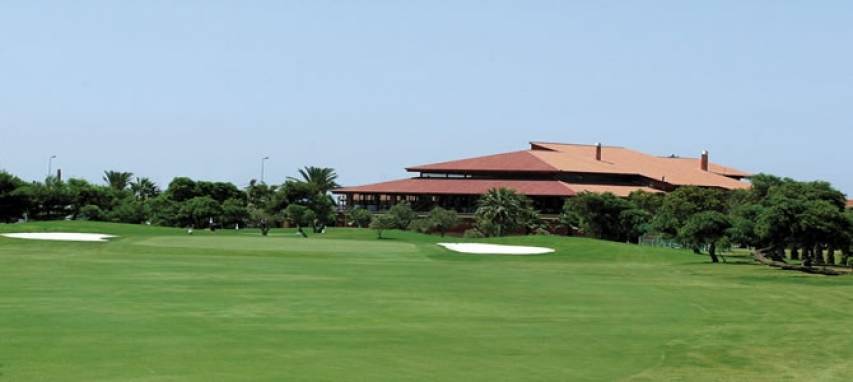“Golf is a highly strategic segment for this tourist destination”
Cristóbal Fernandez’s position comes with great responsibility. Under his management is one of the key bodies that has a major impact on the economic sustainability and development of the region with Spain’s largest population: the State-Owned Company for Tourism and Sport in Andalucía. Not surprisingly, tourism represents approximately 13 per cent of the region’s Gross Domestic Product and generates nearly 400,000 jobs. An ex-mayor of Fuente de Piedra municipality in Málaga province and a former provincial parliamentarian, this young, affable man took on the position – as managing director of the aforementioned institution, which is attached to the ministry of tourism and sport – last summer. In this interview he talks about the role played by golf in Andalucía’s strong tourism sector.
Golf is a strategic segment in the Andalucian tourist sector, one that helps ease seasonality. Is the ministry of tourism fully aware of the importance of golf for Andalucía?
Golf is a primary segment for the destination and the ministry is perfectly aware of this, which is why it is a fundamental part of the entire department's strategy, both in development and in strengthening its capacity for attracting tourists. In fact, the figures show that the ministry is acting appropriately in this respect. It is a segment that attracted 530,000 tourists with golf as the main motive in 2016, 10.4 per cent more than in 2015, thus consolidating a clear upward trend in recent years. We must remember that, in 2011, 425,000 visitors arrived here for this motive, so the increase during this period has been close to 25 per cent.
As competing golf destinations begin their recovery, what is Andalucía Tourism doing, and planning to do, to try to maintain or increase the number of golf tourists?
The latest report on the segment made it clear that this is an aspect that needs to be monitored, not only analysing the competition from certain countries but also from others that are entering the market. For the global tourism industry it is good news that these destinations are recovering, because that will benefit the entire sector. It is also true, however, that Andalucía has a strong leadership position, due to its climate and its range of golf courses, and just as importantly due to its complementary options and a series of intangibles that are difficult to match. The work of all those involved in this segment, both private and public, is aimed at further improving this privileged position, ensuring that new visitors remain loyal, attracting potential travellers and reinforcing the promotion of Andalucía as a destination for both new and traditional source markets.
Are you considering new promotional formulas to retain golfers from traditional source markets and to attract new markets?
Golf is a priority product in our annual action plan. In fact, for 2018 a fortnight of specific golf promotional initiatives is being planned, as this is also an extremely prominent segment for those events that highlight the region’s overall attractions. To that end, initiatives aimed at countries and areas that are increasingly entering this segment, such as France, Portugal, central Europe and the Baltic countries, are contemplated. Without, that is, overlooking promotions in other well-established markets, such as the United Kingdom, the Nordic countries and Germany. In short, it is a global strategy that combines both key professional meetings in the sector as well as direct contact with customers, conversations with tour operators, and spreading the word through events.
The Costa del Sol’s golf courses are currently quite busy, although in other golf tourism areas of Andalucía the same does not necessarily apply. What initiatives does Andalucía Tourism contemplate to increase employment in areas such as the coasts of Cádiz, Huelva and Almería?
In general, the level of activity for the entire grouping of Andalucian golf courses is very high. Territorial and seasonal distribution of tourism activity in the whole of Andalucía is a major objective of the ministry, not only in terms of the golf segment. The region works hard at being an attractive destination throughout the year, because its climate allows this. In fact, golf is one of the segments that contributes most to easing seasonality and, in addition, it benefits greatly from Andalucía being an ideal destination during any season.
There has also been a lot of progress in territorial distribution, both in generating new options and in improvements to the accessibility of destinations, as well as in promoting the whole array of attractions offered by the region at any point in our geography. In addition, golf travellers enjoy playing at new courses, so this is an opportunity to show them several options for their next visits.
Andalucía Tourism is once again committed to sponsoring major tournaments such as the Andalucía Valderrama Masters and the Spanish Women's Open. Are you satisfied with the results that these investments are providing in terms of promoting the destination?
This aspect was also one of the issues addressed by golf courses and industry professionals in Andalucía in the latest report we have available on the sector: that is, the importance of hosting championships or other events, both national and international, as a channel of communication to let people know about Andalucía’s golf amenities. Events such as the Andalucía Valderrama Masters and the Spanish Women’s Open have been a success in both sport and tourism promotion. These events generate a direct impact when it comes to visitors who travel to the destination to enjoy them as spectators, but we must also not forget the enormous indirect impact through the media. A top-level competition such as the Andalucía Valderrama Masters is broadcast worldwide, showcasing Andalucía’s exceptional climate, golf courses and complementary options and attractions.
The Junta de Andalucía has three public golf academies in the region: El Toyo in Almería, La Cartuja in Sevilla and La Garza in Linares – the last two with nine-hole courses. Have these facilities contributed to, or are they contributing to, an influx of new aficionados to the sport?
One of the objectives of this strategy is to bring golf to any Andalucian who might be interested in playing the sport. These academies have an increasing influx of players, with multiple events and tournaments, and they are being consolidated as an excellent option for those wanting to start out in such a fascinating world of sport. Andalucía is a national leader in the number of golf courses and the region with the highest concentration of facilities in continental Europe, but it also sets a benchmark in the number of golfers. Golf is the third sport in the region when it comes to number of participants officially registered with a federation, with more than 43,400, only surpassed nationally by Madrid.
One of the recurring criticisms by environmental groups is that golf courses require large water resources. However, more and more courses are being irrigated with recycled water, and new technologies mean that water consumption has been reduced significantly in recent years. What is your opinion about this?
It is evident that lack of water is a problem, not only in Andalucía but also at a global level in many other areas. However, golf in this region is precisely one of the best examples of sustainability, with a very high level of irrigation using recycled water. In addition, the sector continues advancing more and more in this respect, and has become well consolidated as a standard-bearer both in Spain and internationally.
Another stigma weighing on golf is that it is a sport only for the well-off, when the reality is that there are about 300,000 Spaniards of all economic levels who play it. It is, after football, basketball and hunting, the sport with more federation-registered participants in Spain, almost nine per cent of the total. What do you think can be done to eradicate that false image of golf as a sport for the elite?
As indicated previously, in Andalucía golf is the third most popular sport when it comes to licenses, and is experiencing continuous growth. State schools also contribute to this popularisation and, as for the options, there are opportunities for all budgets. The sector as a whole is focused on bringing golf to local residents, in order to generate a new mass of fans while also contributing to the maintenance of golf courses. Initiatives are being undertaken to promote the sport among young people, women and families, through special promotions and parallel activities. In short, important steps are being taken to bring golf to the whole public, although we must continue to move forward to overcome certain prejudices.
How do you see the future of Andalucian golf? Do you think we have reached a ceiling or can we still grow in the number of courses and visitors?
Andalucía is a national leader in golf course amenities, with more than 100 and 20 per cent of the country's total, but demand is also very high, especially in a destination as attractive as ours for playing golf. In Spain alone there are more than 271,000 officially federated golfers, but the six main international source markets total almost three million (United Kingdom, Germany, Sweden, France, Holland and Ireland). Therefore, there is a huge potential public, extensive amenities in volume and quality, an extraordinary environment, and multiple options to complement visitors’ stays: an array of options that contributes to Andalucía continuing to beat records and allows us to look ahead with optimism.
Andalucía has been breaking tourism records year after year. What are the prospects for 2018?
According to our expectations, Andalucía will close this year comfortably exceeding 30 million tourists, with growth of around 4.5 per cent. Achieving this figure would enable the destination to go beyond its own historical records, which had been expected to be topped in 2020. This expected increase follows 2017, when we had 29.5 million tourists, almost five per cent more than the previous year, an upturn that showed its greatest strength outside the summer season, with positive data in all provinces and an increase in the tourist labour market of 4.6 per cent.
Fortunately in Andalucía there are no cases of “tourism-phobia” as in other Spanish destinations. Could this happen, however, if tourist pressures increase uncontrollably?
The best tool to avoid so-called “tourism-phobia” is the sustainability of the tourism sector itself, something we have to assume as a destination to ensure co-existence between residents and tourists. All those involved must be ready to respond so that tourism, far from being a threat, is understood to be an opportunity for development, growth, equality and generation of wealth. This response must be based on a proper oversight and management of tourist areas, on optimal distribution of passenger flows, on innovation, excellence, differentiation, imagination and conservation of the environment. In that respect, Andalucía has been a pioneer in applying measures aimed at achieving these objectives, the last of which was approval of a new General Plan for Sustainable Tourism in Andalucía – Outlook 2020.








